Technical specifications: as listed by AquaTuning.
Technical details
Case: Steel
Color: Black
Connector: 2xG1/4
Cooling channels: Copper
Dimensions (L x B x H): 410 x 130 x 50mm
Fan mounting thread: M3
Fan size: 120mm
Manufacturer: Phobya
Material lamellae: Aluminium
Number of fans: 3
Pressure tested: 5 Bar
Thickness: M – 45mm
Dimensions Measured on the Radiator Tested:
 While the radiator casing is 50mm thick as measured above, the G ¼ ports protrude an extra 14mm.
While the radiator casing is 50mm thick as measured above, the G ¼ ports protrude an extra 14mm.
My fin count of 9 FPI is the only difference between the core of the Phobya HPC and that of the Watercool HTSF2 which has 10 FPI. This subtle difference probably has to do with a licensing agreement. Of more importance to us though, is that we should expect to see a subtle performance difference between the two samples.
As the Phobya HPC’s core is essentially the same as that of the Watercool HTSF2 (FPI being the only difference), I’m going to re-use pictures and information (with slight edits) from the HTSF2 review.
The HPC has a finned tube style core, which differs from most PC radiators which have flat tubes and corrugated fins.
In my tube count I listed 6 – which is the tube count across the face of the core. But the finned tube style core of the HPC is so different that it requires further explanation. The tubing configuration is actually made up of 3 rows of 3 U shaped copper tubes, effectively creating 18 tubes. These are then soldered together on the port end which effectively creates 3 long tubes. Are you confused yet?
To help better understand, I dismantled the rad so we can see the tubes and the flow path. The ability to dismantle makes the HPC a modder friendly rad, by being able to remove the panels for painting if black is not your thing.
First let’s take a look at the non-port end of the core assembly which clearly shows the 3 rows of 3 U-shaped tubes mention previously.
This also shows us why there is no fill/bleeder port fitted on the return end of the HPC. At this end the copper tubes are bent, and there is no brazing or soldering.
Now let’s take a look at the port end of the core assembly.
Here we can see the soldering/brazing on both the short splitter tubes connecting the ports to the tubes and the bent U pieces of copper connect the tubes together.
The next photo gives us a better view of how coolant is directed into the triple parallel flow path. We also can see why the ports stick out as fat as the do and why there is no alternate ports on the HPC.
So we now have a clearer picture of the tuber assembly of the HPC core. The final photo shows port side face of the core we can now see the flow path of the HPC and can see how the soldered tubes go up and down 6 times.
The end result is that we have a 9 FPI finned tube core with a triple parallel, 6 pass coolant flow path.
Finish and Features
The Phobya HPC has an all steel enclosure which gives it a very solid and weighty feeling. It has a satin black powder coat finish which has a very slight texture to it. This finish is excellent and makes a very striking contrast to the aluminium fins fitted to the silver painted copper tubes.
Personally I think the use of black rivets would have been better than the silver ones used, but they can be touched up easily enough. Incidentally it is these rivets which must be drilled out for dis-assembly – use a depth stop as there is one tube located not too far under one of the rivets.
The fan mount spacing is the standard 15mm. No protection plates are fitted, but there are no tubes directly under the mounting holes.
As we have seen the HPC comes equipped with just the single inlet and outlet ports.
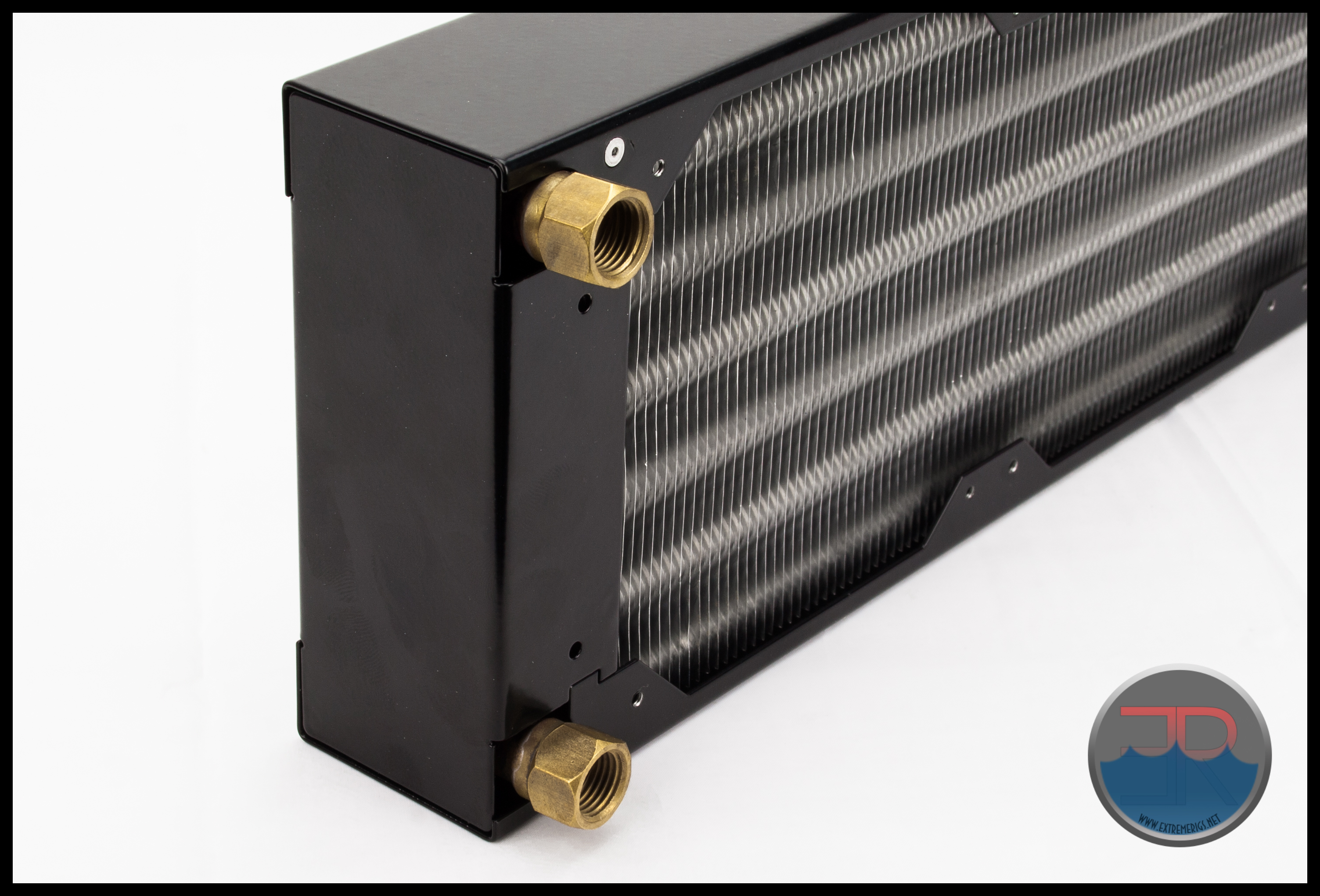 And no fill/bleeder port at the return end…..
And no fill/bleeder port at the return end…..
We have seen that the ports protrude from the casing a decent amount, about 14mm. While showing this, the next few pictures also show one of my main complaints about the HPC (and Watercool HTFS2). That being that the copper ports are not attached squarely to the copper splitter tube, or the splitter tube is not straight. Either way, the end results is that the ports end up coming off at a weird angle.
Notice the angle that the port is on affects the measurement by nearly 1mm even over such a short distance.
So there we have it – a 50mm thick finned tube rad with a low FPI which has a good finish but not much to offer in the way of additional features.
Let’s see how it performs…







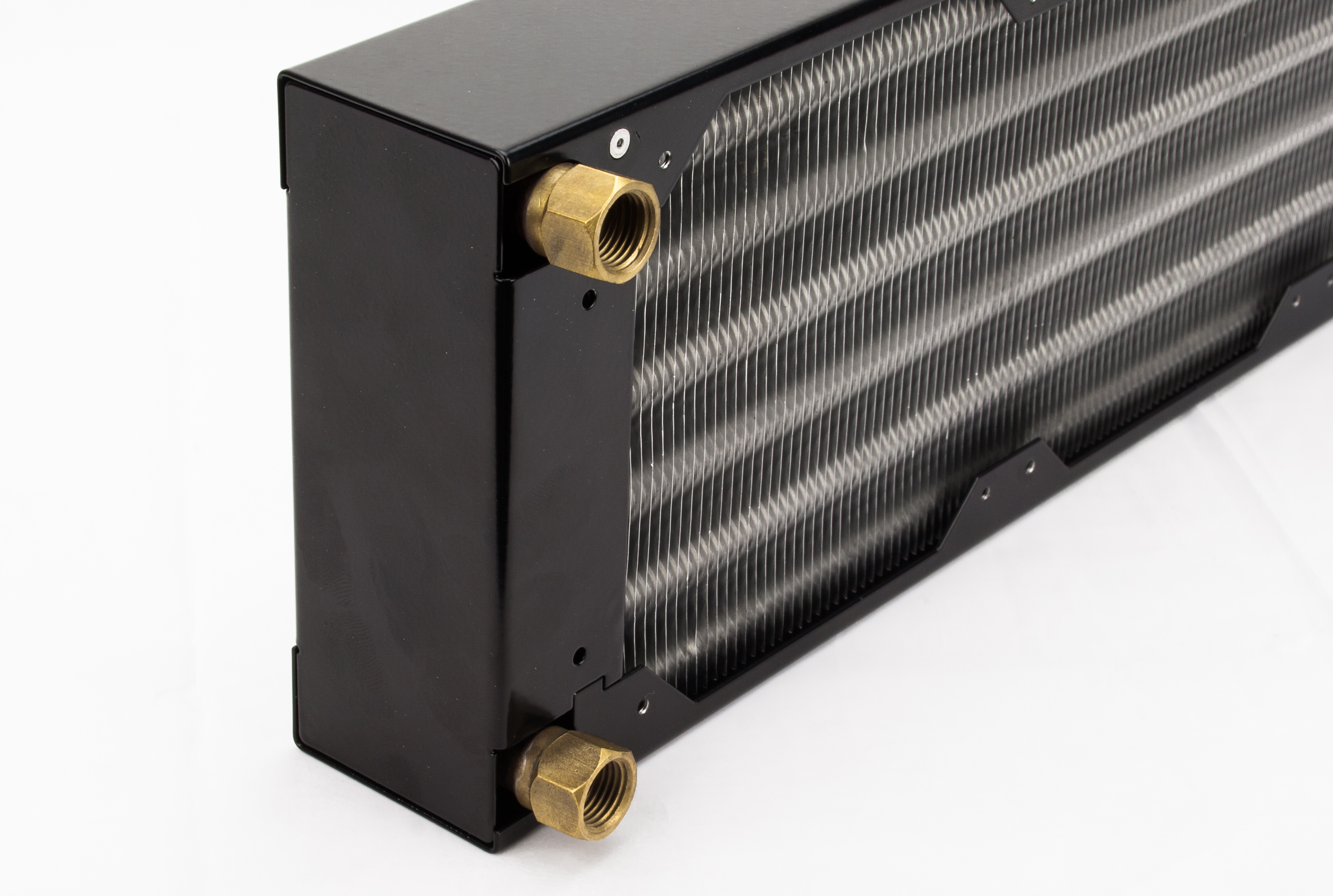
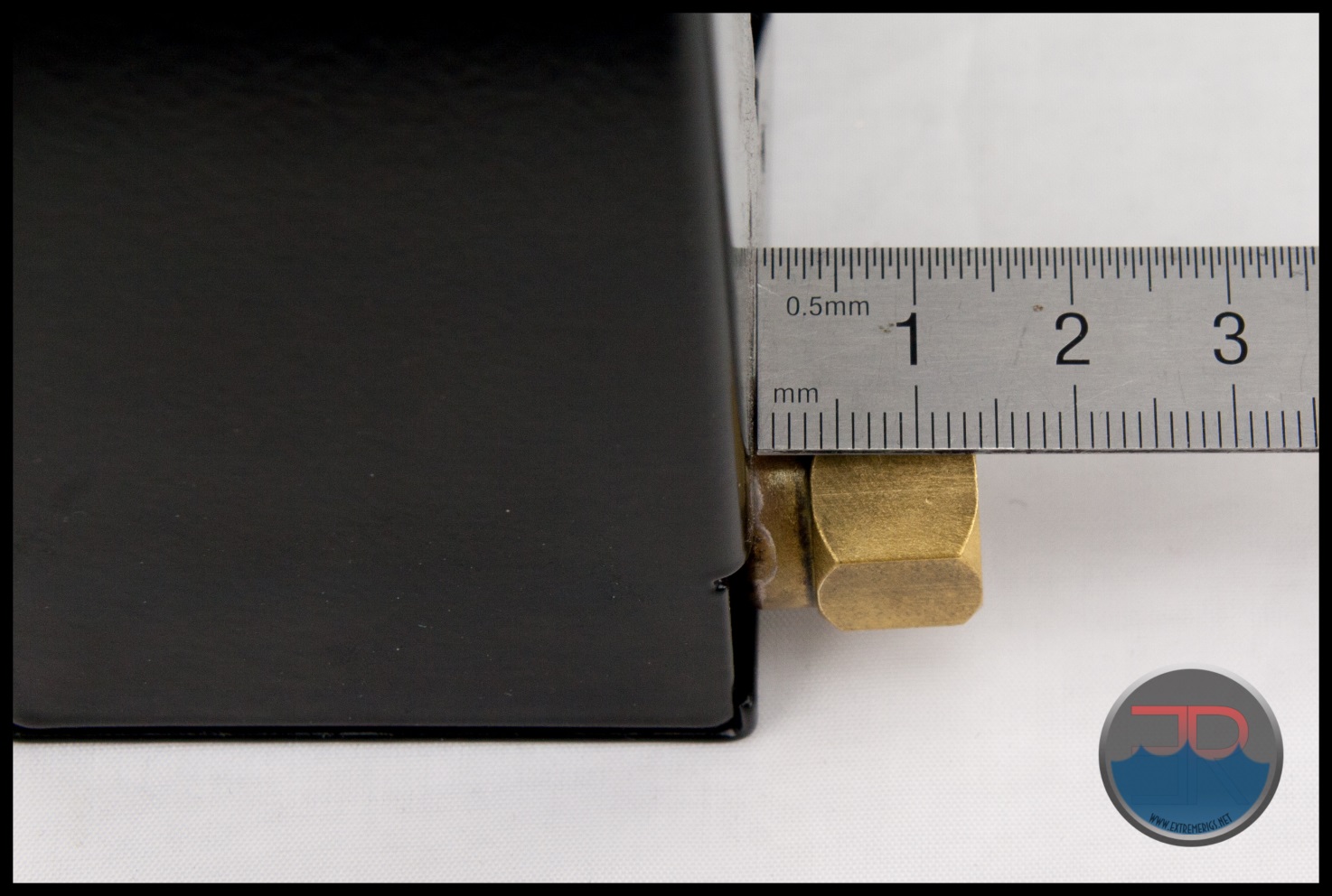

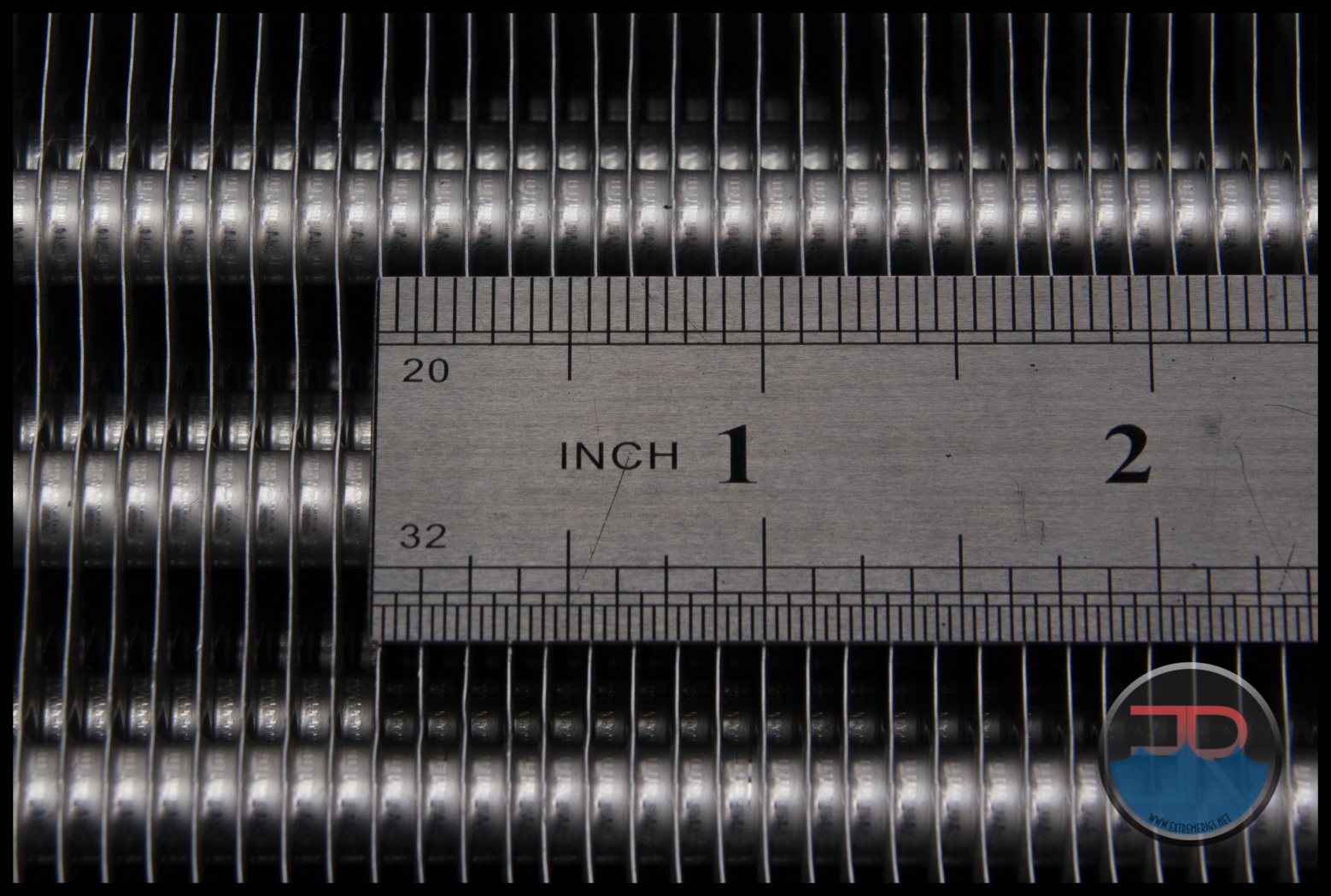
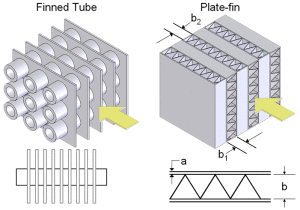
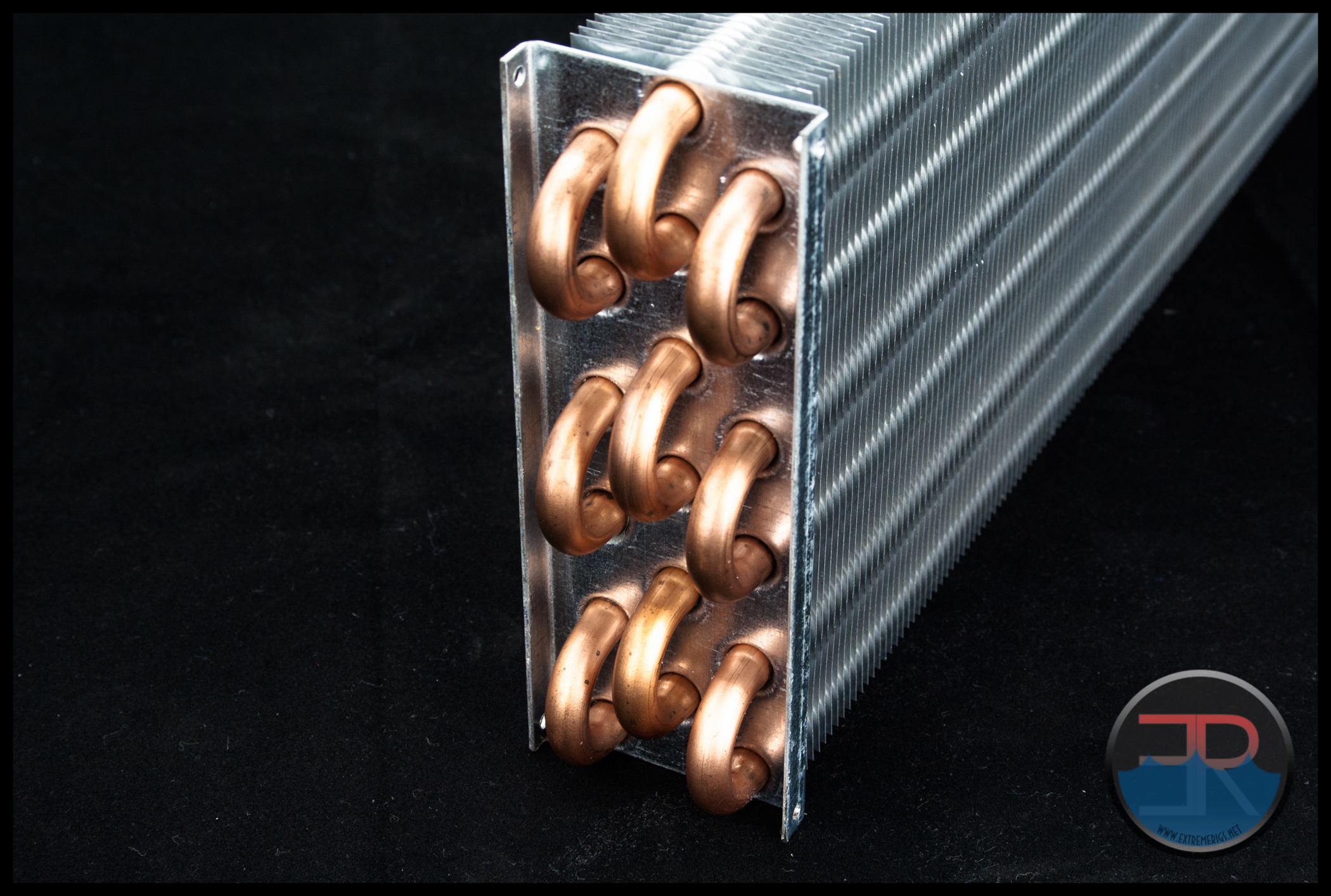
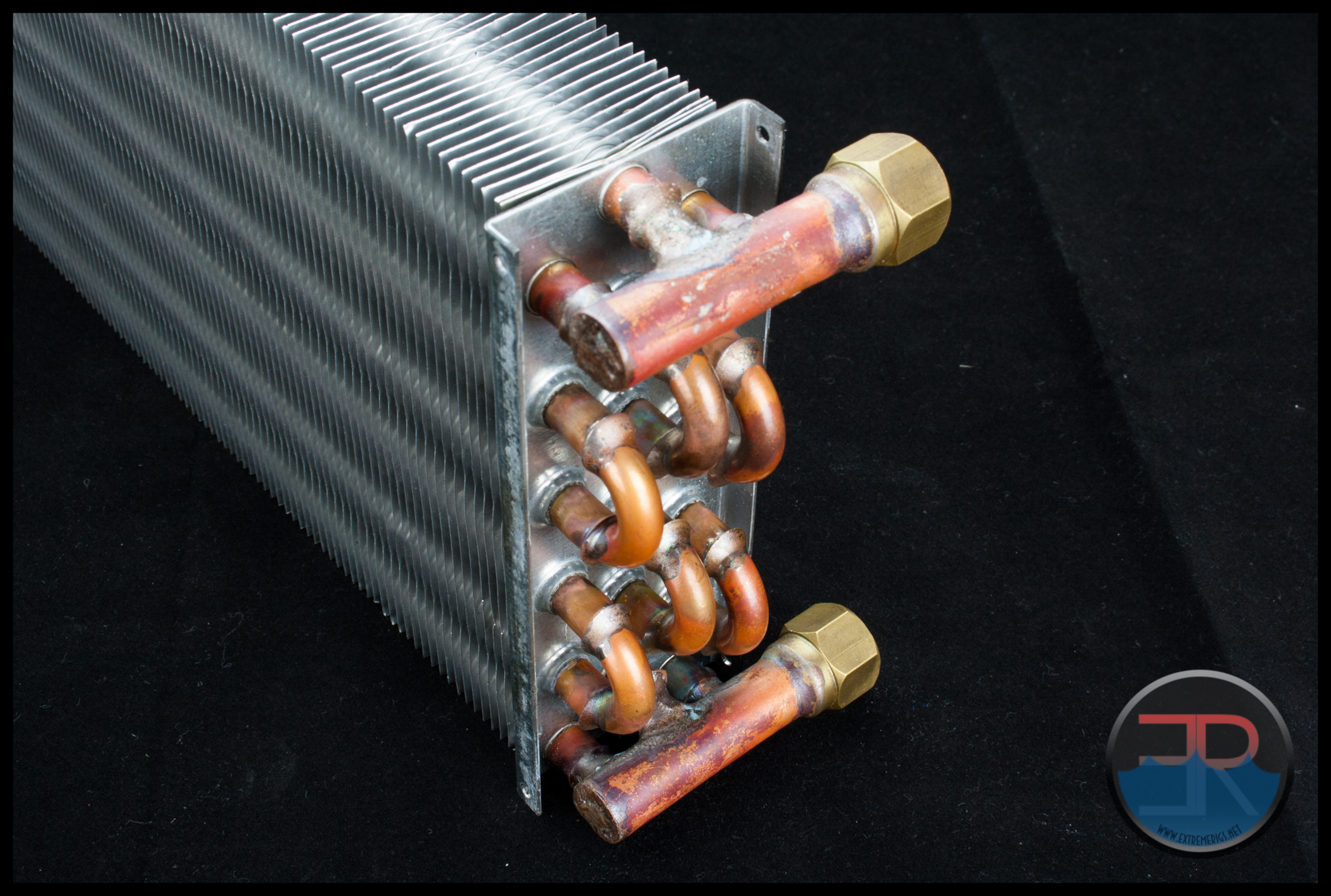

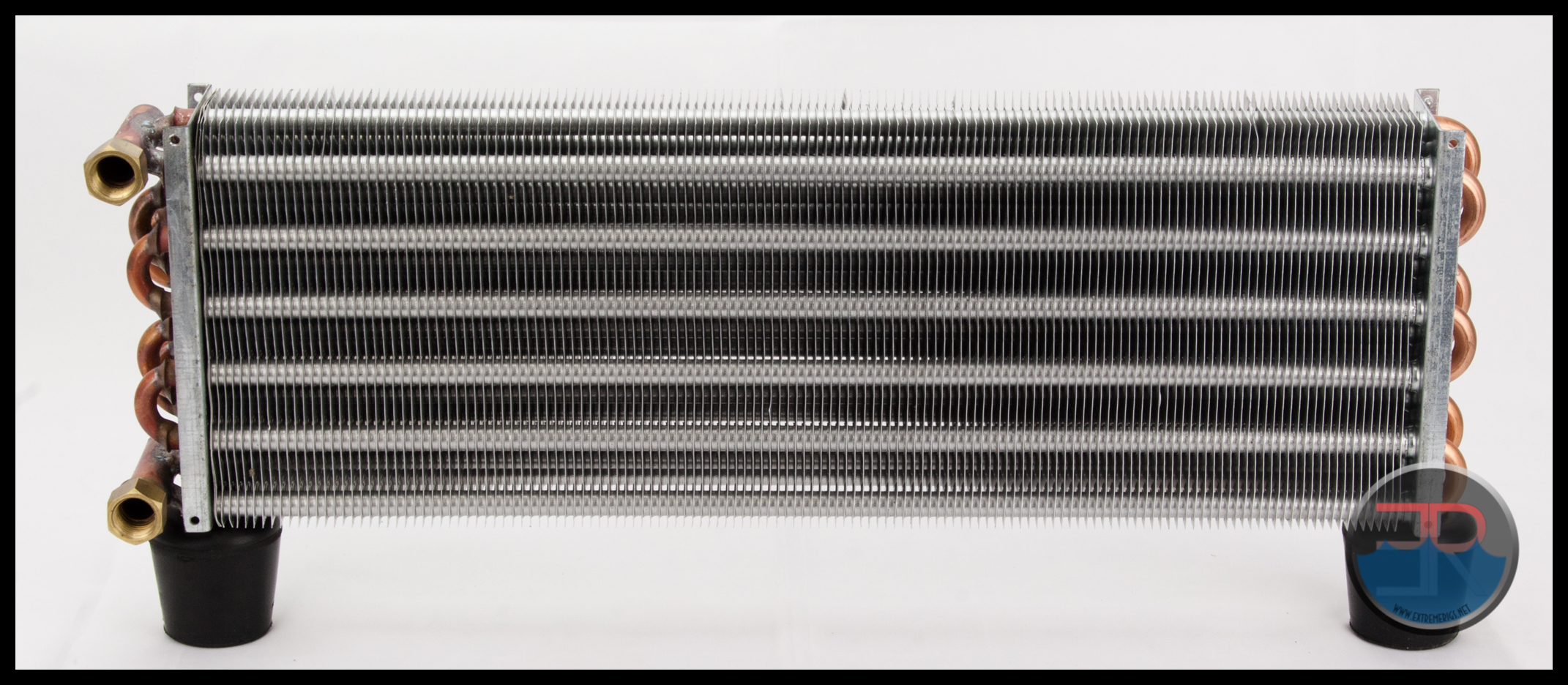
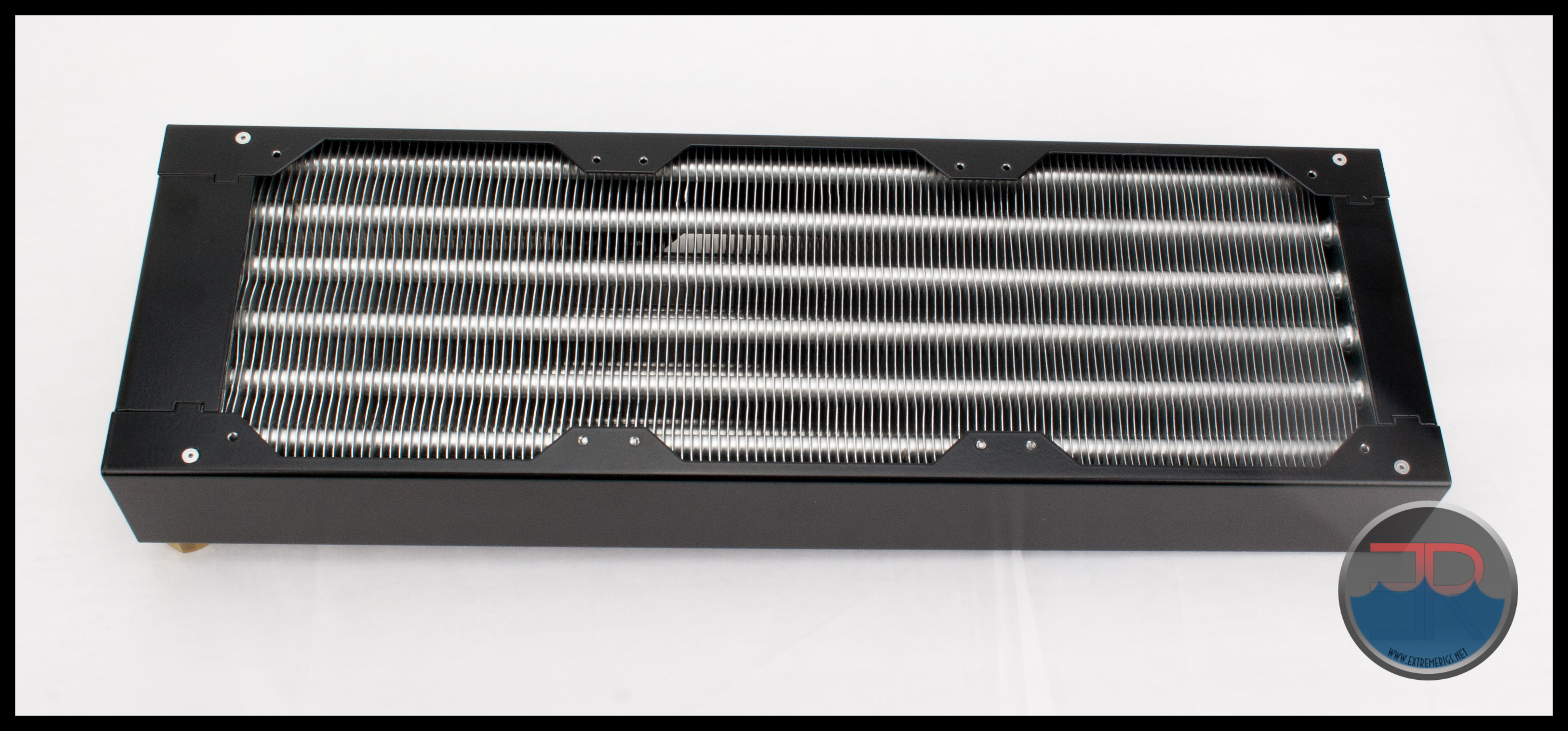
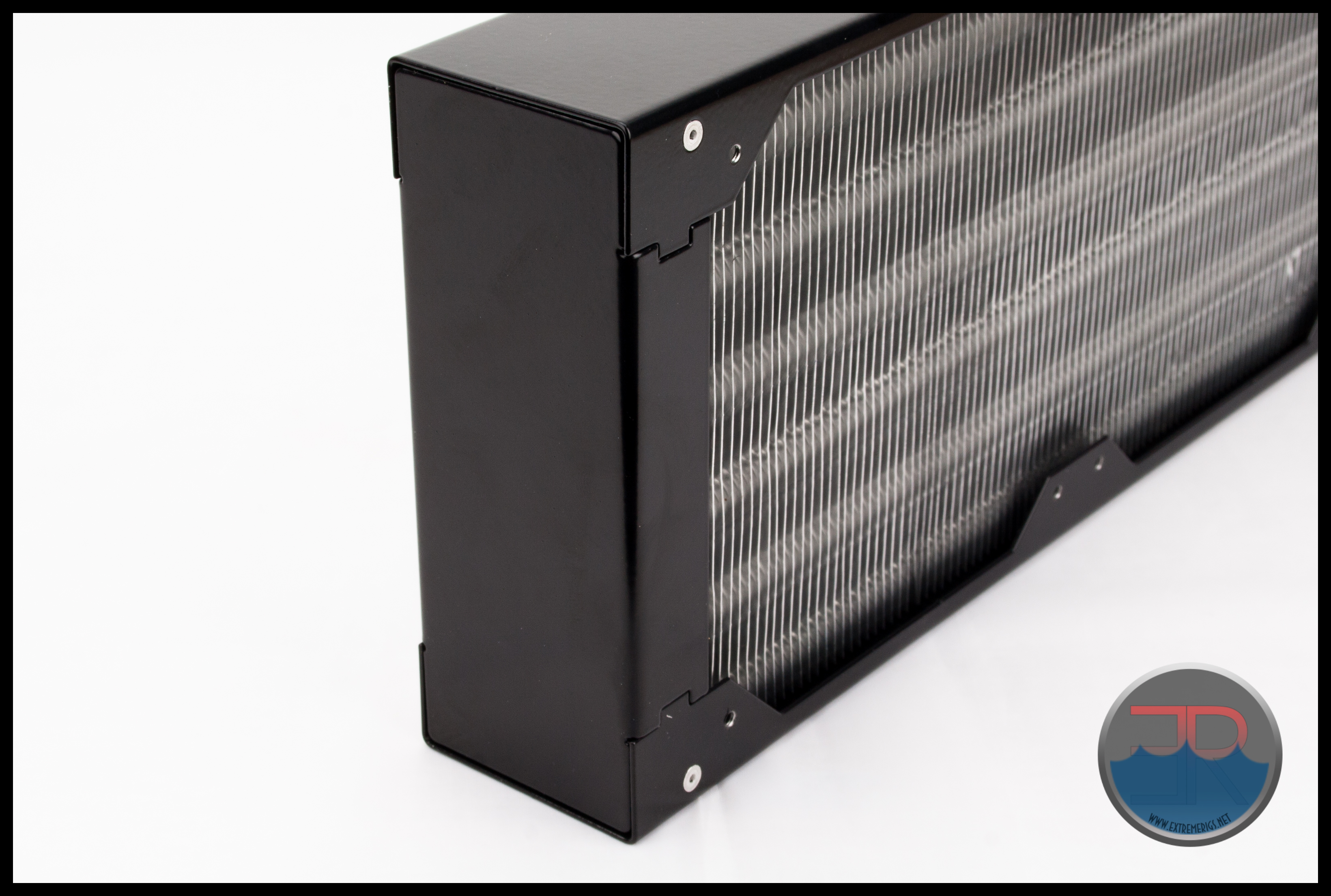
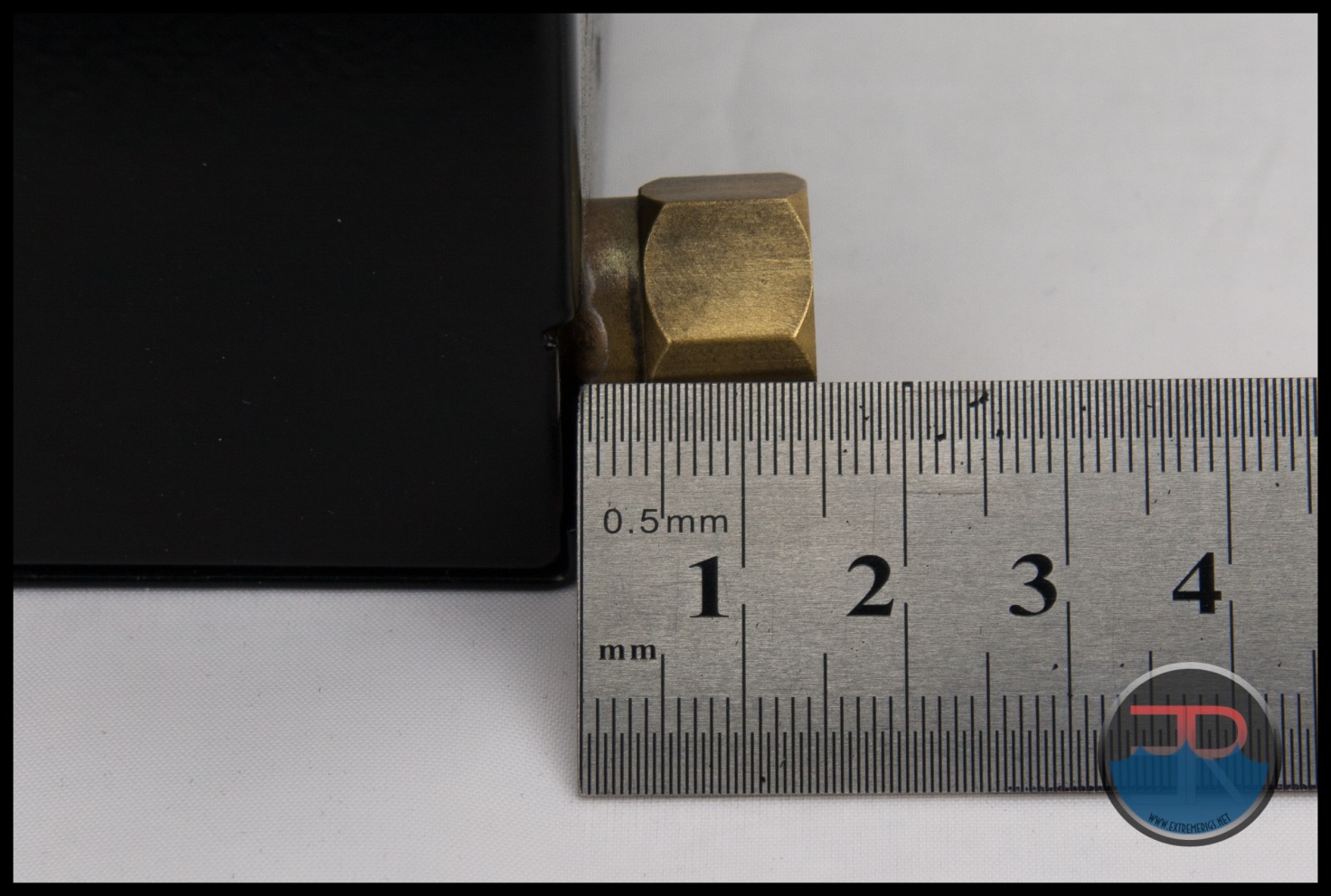
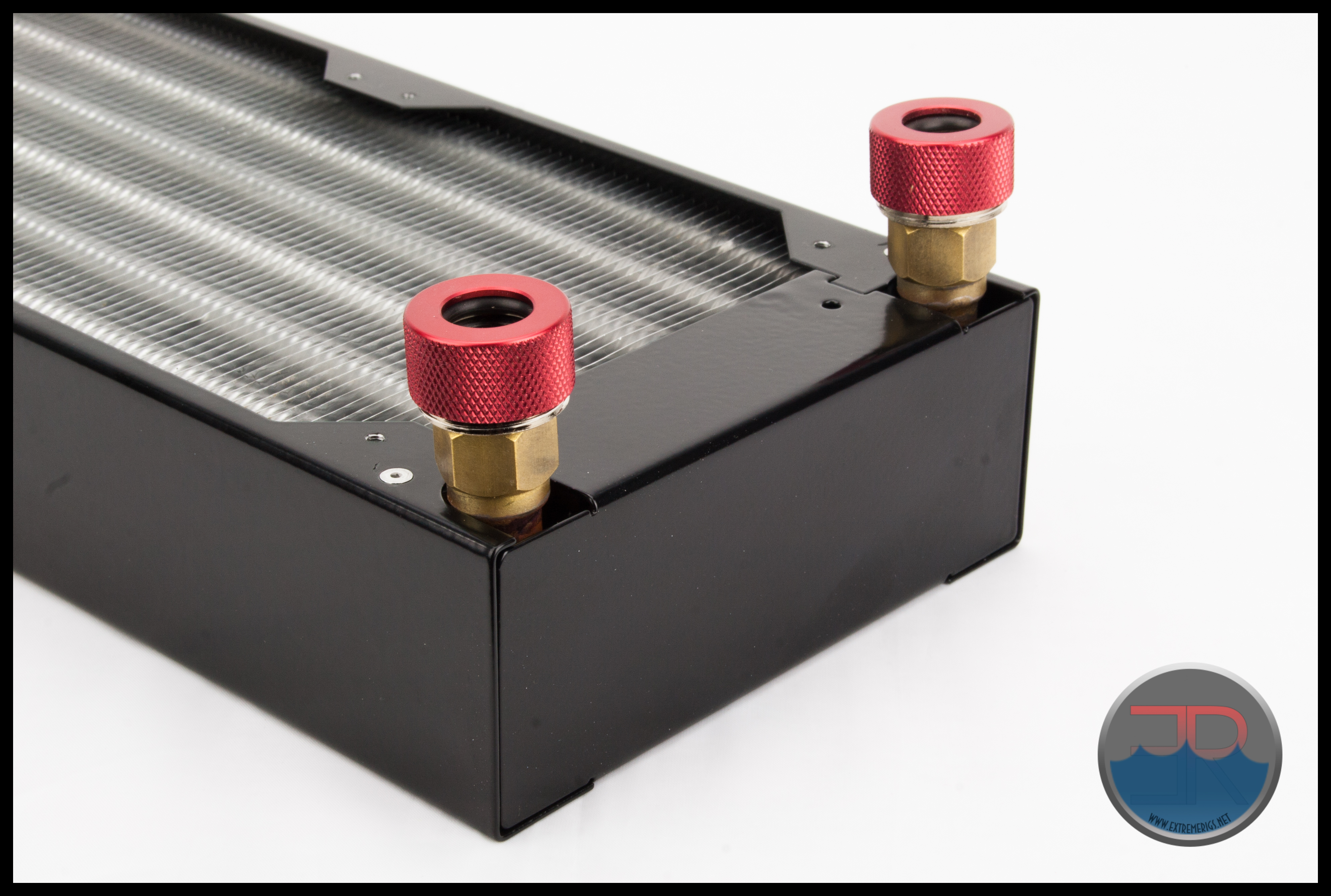
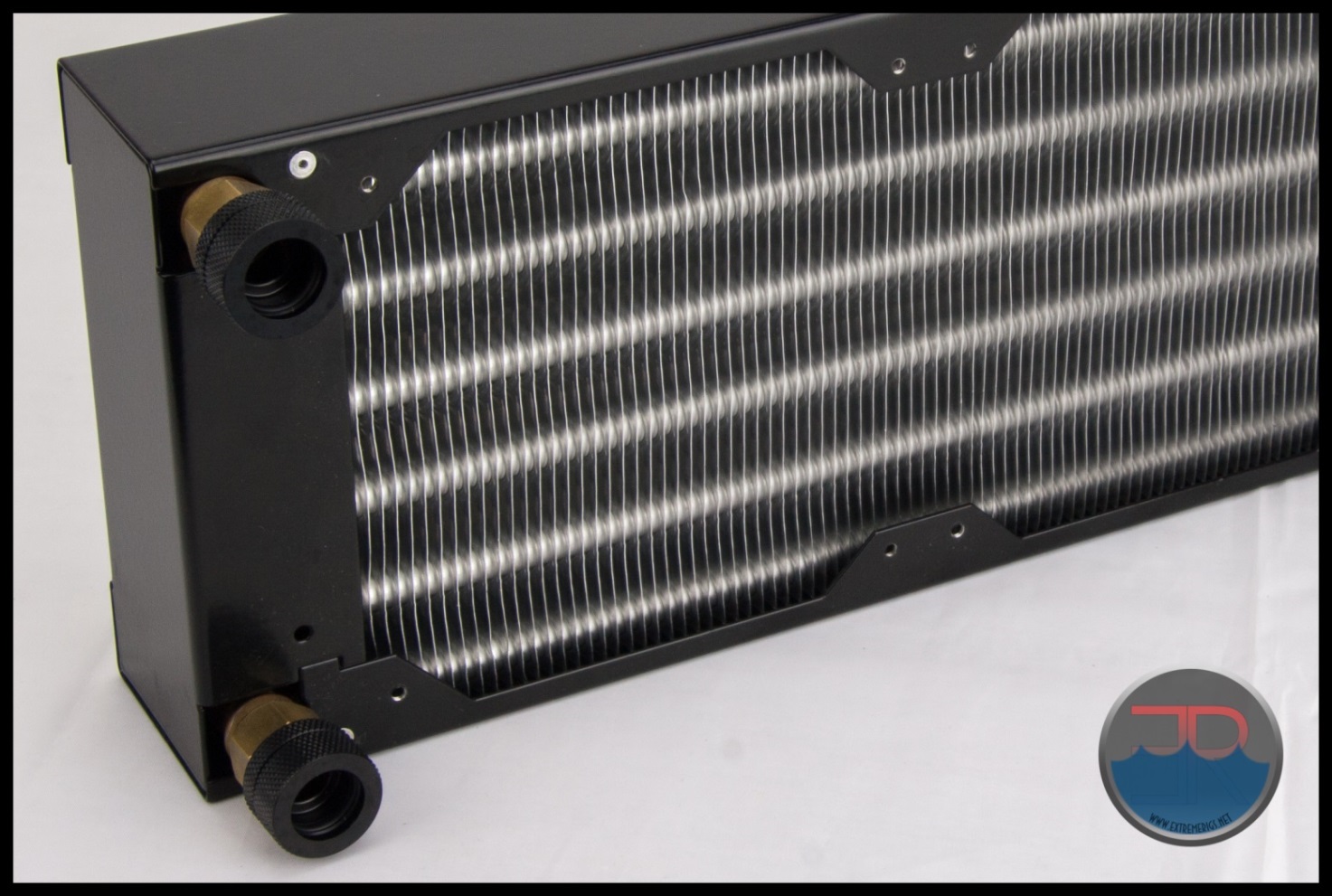




[…] Koolance HX-360XC 360 Radiator Magicool G2 Slim 360 Radiator Mayhem’s Havoc 360 Radiator Phobya G-Changer HPC 360 Radiator Phobya G-Changer V2 Full Copper 360 Radiator Watercool HTSF2 3×120 LT 360 Radiator XSPC EX 360 […]
Comments are closed.